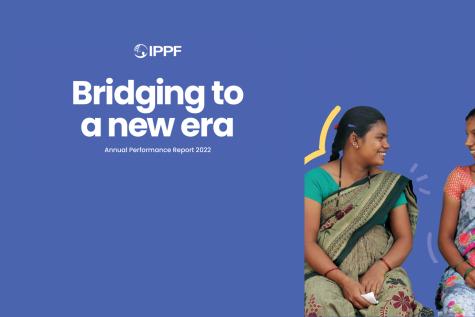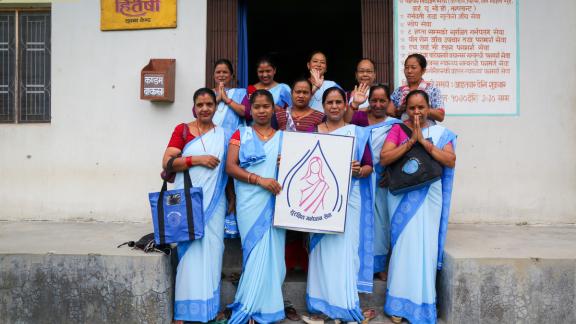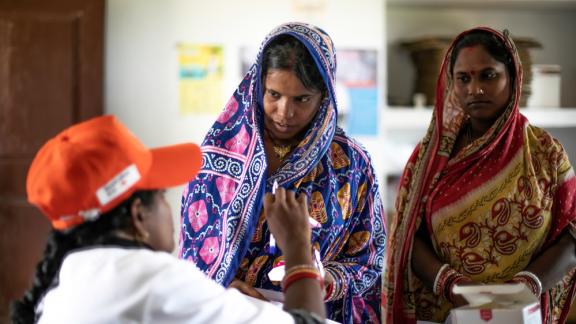Spotlight
A selection of resources from across the Federation

2022 Annual Performance Report
Bridging to a new era.
Filter our resources by:


| 04 June 2018
Financial Statements 2017
The overall group income of IPPF has risen by US$3.1 million (3%) to US$102.4 million (2016: US$99.2 million). Unrestricted total income rose by US$4.1 million and restricted income fell by US$1.0 million. IPPF’s main source of funding is government grants, which account for 82% (2016: 79%) of total income. In 2017 unrestricted government funding increased by US$1.4 million (2%) to US$67.4 million. The main reason for the increase was the increase in funding from the Scandinavian countries (Norway US$9.1 million, Sweden US$ 4.8 million and Denmark US$ 4.0 million) to assist in bridging the funding gap caused by the impact of the Global Gag Rule and the loss of UK government funding. Restricted government funding amounted to US$16.8 million, up from US$12.1 million in 2016. The Government of Australia continued to provide support (US$3.6 million) in relation to the global SPRINT Initiative to provide sexual and reproductive health services to crisis and post crisis areas in South East Asia, the Paci c, South Asia, and Africa and to help fund our Fiji office which supports Paci c MAs. USA provided US$6.7 million of funding for a number of programmes. The Government of Japan provided US$1.8 million for work on integration of SRHR and HIV and AIDS and humanitarian assistance for internally displaced people in Syria and refugees in Jordan and Lebanon.The Government of Germany US$0.2 million to improve access to promote sexual reproductive health services in Syria and to displaced persons in Sudan. The governments of the Netherlands, Norway and an anonymous donor also provided funding of US$3.7 million to the Safe Abortion Action Fund. Grants from multilateral donors and other sources decreased by 24% from US$20.6 million to US$15.8 million. A signifcant factor in the decrease was US$3.1 million from Bill and Melinda Gates Foundation, US$2.7 million UN Programme on HIV/AIDS and US$0.4 million from the David and Lucile Packard Foundation as some current projects came to an end.
| 07 May 2018
Building National Resilience for Sexual and Reproductive Health: Learning from Current Experiences
In disasters, women face increased health and protection risks, resulting in the critical need for sexual and reproductive health (SRH) services. Since 1997, the Minimum Initial Service Package (MISP) has been the standard of care for SRH in humanitarian settings. A multisectoral and multidisciplinary health emergency and disaster risk management system further protects public health and reduces morbidity, mortality, and disability associated with emergencies. Thus, In 2015, the Women’s Refugee Commission (WRC) collected examples of efforts to integrate SRH within emergency and disaster risk management for health (EDRMH), exploring achievements, challenges, and reflections, in the Eastern Europe and Central Asia (EECA) region, Macedonia, and Pakistan. Learning regarding SRH inclusion within disaster risk management systems remains nascent. However, these case studies offer early learning that can inform work on this topic moving forward.

| 26 February 2018
Over Protected and Underserved - The Influence of Law on Young People's access to Sexual and Reproductive Health in Nepal
This report presents findings of a study exploring the influence of law on young people’s access to sexual and reproductive health in Nepal. Whilst there is a wealth of global research on the social, cultural and economic dimensions of sexual and reproductive health, much less is known about the influence of law on access to rights and services. This is despite the fact that every state around the world, without exception, has developed legislation that is in some manner designed to regulate, enable, restrict and control sexual and reproductive health, for different groups of people, and in different situations and circumstances.

| 16 January 2018
Annual Report of IPPF SARO for 2016
Annual Report of IPPF SARO for 2016









